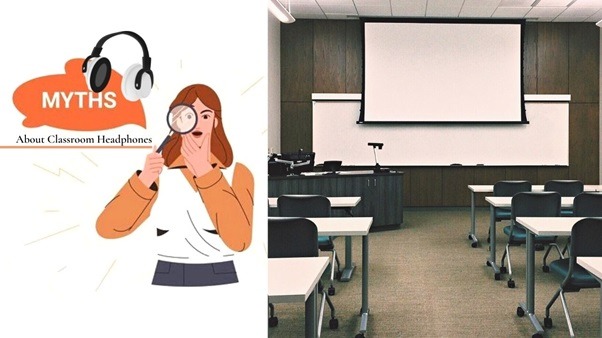Wondering what’s fact and what’s fiction about school headphones? Read this to find out the truth
We thought it was high time someone took the trouble to debunk the myths about your high-school-headphones. We gathered eight of the most common legends and sought to bust them right here. Here are all the things you should – and should not – know about classroom headphones.
The Top 8 Myths about Classroom Headphones
Worried about using the headphones your classroom gives out on loan? Do not be. There is nothing to fear if everything is properly cleaned. Here are some other myths about headphones busted.
1. They come from the cheap bin
This just is not true. Your school will do their best to find the best quality of headphones available to buy in bulk for your class. They will not be top-of-the-range in terms of gaming or VR, but they will be a high-quality item, built to last. In truth, most teachers and schools buy their headphones wholesale on Amazon.com.
2. They are poorly made
Your school headphones are just as well made as any other type of headphone. Classroom headphone sets are often more durable than other types of headphones. This is because they sometimes come with a warranty which allows your school to swap them to be repaired or replaced should they need it.
3. They hurt your ears
School headphones are volume limited. This means they cannot go loud enough to hurt your ears. What you end up with is a classroom headphone that will not damage your child’s hearing over time. Studies blame headphone use in children for hearing loss.
4. You cannot share Earphones
You can share headphones and earphones in your school, although deep cleaning needs to be performed between each use. You should see this article for advice on how to thoroughly clean headphones so you don’t cross-contaminate potential covid cases among your students.
5. Schools use them all day
This is not true either. Schools use headphones and screens as part of blended learning. This does not mean they sit them in front of a screen and connect them for the entire day. Only part of the lesson will be spent using headphones. Like any other learning tool, kids would get bored if they were using headsets all day.
6. Kids cannot afford them
While this might be true about headphones the children may take home with them, it is not true about classroom headphones. In this case, the school will buy and keep the headphones and your child gets the use of them for a lesson or two a week.
7. Headphones do not help
Headphones are an assistive technology which open previously untapped resources to the challenged child. If they suffer from educational problems, headphones can help communicate traditional lessons in a more effective way. For example, they can help dyslexic children get all the benefits of reading.
8. Headphones give students an unfair advantage
If you see a child in a classroom wearing headphones when nobody else is, this usually means they have auditory processing disorders. No child with these types of conditions could be said to be at an advantage regardless of what tech they must aid them. To judge a child this way is frankly unfair.

